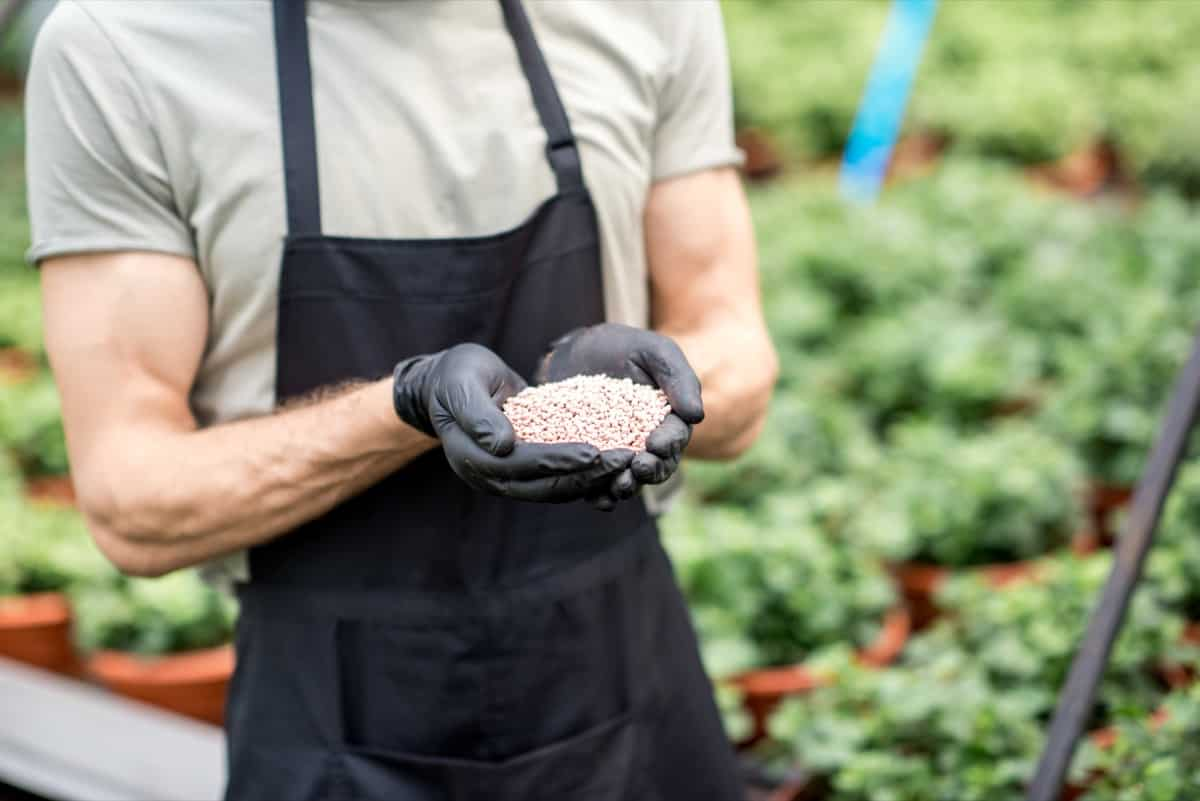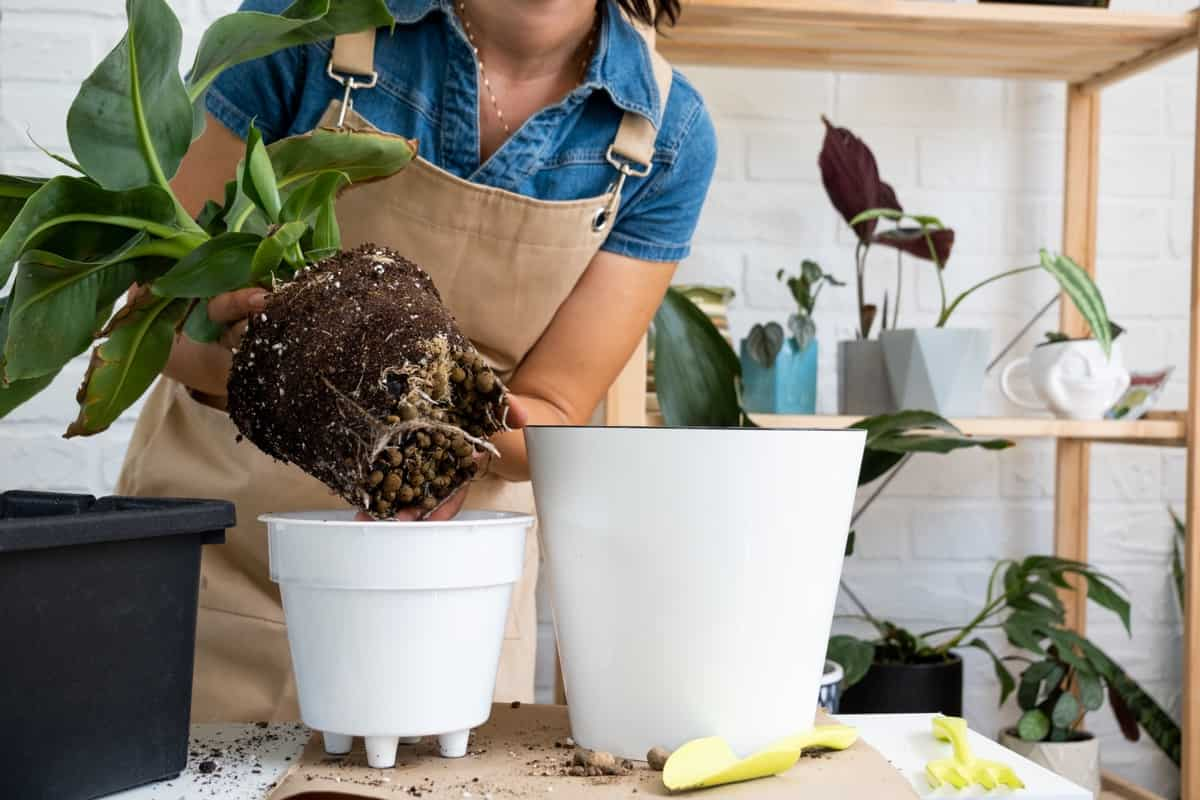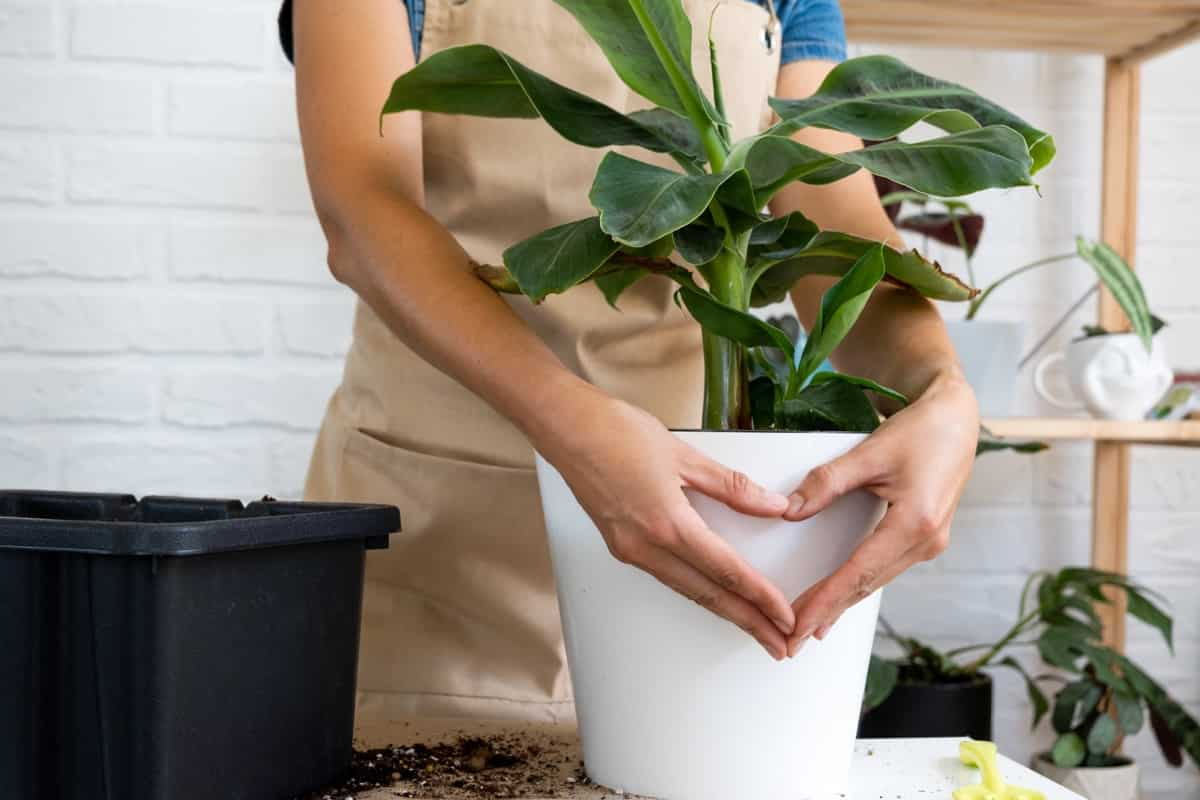Organic fertilizers are a great way to ensure optimal growth and health when nurturing your potted banana trees. Organic fertilizers are produced from natural sources and contain nutrients that benefit your plants. This guide will explore options for organic, natural, and homemade fertilizers for banana trees in pots. Additionally, we will discuss the importance of NPK ratios in selecting the right fertilizer for your plants and when and how to apply them.

Fertilizing Potted Banana Trees
Organic Fertilizers for Banana Trees in Pots: Nurturing Your Plants Naturally
Organic fertilizers are an excellent choice for potted banana trees as they provide a natural and sustainable approach to plant nutrition. These fertilizers are made from naturally occurring materials like plant and animal waste, bone meal, fish emulsion, and vermicompost. They contain various nutrients, including nitrogen (N), phosphorus (P), and potassium (K), as well as micronutrients that are essential for the healthy growth of your banana trees.
One popular organic fertilizer for potted banana trees is compost. It is rich in organic matter and nutrients, making it ideal for promoting healthy root development and overall plant growth. Mix compost as a fertilizer into the soil around the base of your banana tree, ensuring that it is evenly distributed. This provides a slow-release source of nutrients, feeding your plants over time.
Natural Fertilizers for Banana Trees in Pots: for Environmentally-friendly Options
Natural fertilizers are derived from organic sources and are free from synthetic chemicals, making them safe for your plants and the environment. Some examples of natural fertilizers include seaweed extract, worm castings, and bat guano. Seaweed extract is an excellent natural fertilizer for potted banana trees.
It is rich in trace elements and growth-promoting hormones that stimulate plant growth and enhance plant resilience. To use seaweed extract as a fertilizer, simply dilute it per the package instructions and apply it to the soil around your banana tree. This will provide a nutrient boost and help your plants thrive.
Homemade Fertilizers for Banana Trees in Pots: DIY Solutions for Optimal Plant Health
Homemade fertilizers can effectively and efficiently nourish your potted banana trees. Homemade fertilizers can be made using common household items such as kitchen scraps, coffee grounds, and eggshells. One popular homemade fertilizer for banana trees is banana peel tea.
In case you missed it: Backyard Banana Tree Landscaping Ideas: Creating a Tropical Oasis

To make banana peel tea, chop banana peels and soak them in water for a few days. The water will absorb the nutrients from the peels, creating a nutrient-rich fertilizer. Once the mixture has steeped, strain the liquid and dilute it with water. Apply the banana peel tea to the soil around your banana tree to provide a natural source of potassium and other nutrients.
NPK Ratios and Their Importance in Selecting Fertilizers for Banana Trees in Pots
When selecting fertilizers for your potted banana trees, it’s essential to consider the NPK ratios. NPK stands for nitrogen, phosphorus, and potassium, the three primary nutrients plants require. Each nutrient plays a crucial role in plant growth and development. The NPK ratio will be represented by three numbers, like 10-10-10 or 5-10-5, indicating the percentage of each nutrient in the fertilizer.
The ratio you choose will be based on your banana trees’ specific needs. For example, a higher nitrogen ratio (the first number) promotes leafy growth, while a higher phosphorus ratio (the second) enhances root development and flower production. Potassium (the third number) contributes to overall plant health and disease resistance.
Slow-release Fertilizers: Enhancing Nutrient Availability for Banana Trees in Pots
Banana trees grown in pots require proper nutrition to thrive and produce healthy fruits. One effective way to ensure a steady supply of nutrients is by using slow-release fertilizers. These specially formulated fertilizers gradually release essential nutrients over an extended period, providing a consistent source of nourishment for the banana trees. This document will discuss the benefits of slow-release fertilizers, pH levels, fertilizer selection, timing, techniques for applying fertilizer, and water-soluble fertilizers for potted banana trees.
pH Levels and Fertilizer Selection for Banana Trees in Pots: For Balanced Soil Environment
Maintaining the appropriate pH level is crucial for growing and developing banana trees in pots. Banana plants prefer slightly acidic to neutral soil with a pH level range of 5.5 to 7.0. The pH level affects nutrient availability, as certain nutrients become less accessible when the soil pH is too high or too low. When selecting fertilizers for banana trees in pots, it is essential to consider their impact on the soil pH.
Acidic fertilizers, such as those containing ammonium nitrate or sulfur, can lower the pH level, making them suitable for alkaline soils. Conversely, alkaline fertilizers, like those containing calcium carbonate or dolomite, can raise the pH level, making them beneficial for acidic soils. Choosing the right fertilizer based on the soil pH will help create a balanced soil environment for optimal nutrient absorption.
In case you missed it: Fertilizing Potted Grape Vines: Organic, Natural, Homemade, NPK Ratio, When and How to Apply

The Importance of Timing: When to Apply Fertilizer to Banana Trees in Pots
It is recommended to fertilize banana trees during their active growing season, typically spring and summer. Applying fertilizer during this period ensures that the trees receive the necessary nutrients when they need them most, promoting healthy growth and fruit production.
However, it is essential to avoid over-fertilization, as this can lead to nutrient imbalances and potentially harm the banana trees. Following the manufacturer’s instructions regarding the recommended dosage and frequency of fertilizer application is advisable. Regular monitoring of the plant’s response to the fertilizer will help determine if adjustments are needed.
How to Apply Fertilizer to Banana Trees in Pots: Techniques for Maximum Effectiveness
Surface Application: Sprinkle the fertilizer evenly on the soil surface around the tree’s base, ensuring that it does not come into direct contact with the trunk or leaves. Gently work the fertilizer into the soil’s top layer using a rake or hand tool.
Top Dressing: Apply a thin layer of compost or organic matter on top of the soil and sprinkle the fertilizer on this layer. Lightly mix the compost and fertilizer into the soil surface.
Slow-release Fertilizer Granules: Incorporate slow-release fertilizer granules into the potting mix before planting the banana tree. This method ensures a continuous supply of nutrients throughout the growing season.
Water-soluble Fertilizers for Potted Banana Trees
In addition to slow-release fertilizers, water-soluble fertilizers can also be used to supplement the nutrient requirements of potted banana trees. Water-soluble fertilizers dissolve in water, making them easy to apply through irrigation. This method allows for the absorption of nutrients quickly by the plant’s roots, promoting rapid growth and development.
When using water-soluble fertilizers, following the manufacturer’s instructions regarding the proper dilution ratio and frequency of application is crucial. Over-fertilizing with water-soluble fertilizers can lead to nutrient burn or leaching, harming the banana trees or negatively impacting the surrounding environment.
In case you missed it: Best Fertilizer for Potted Onions: Organic, Natural, Homemade, NPK Ratio, When and How to Apply

Conclusion
Understanding the NPK ratio and applying fertilizers at the right time and correctly will contribute to your banana trees’ overall health and productivity. By nourishing your plants naturally, you can enjoy the beauty and abundance of your potted banana trees for years to come.
- Feed Your Flock for Less: Top 10 Tips to Save on Chicken Feed
- Ultimate Guide to Ossabaw Island Hog: Breeding, Raising, Diet, and Care
- Hatching Answers: The Top 10 Reasons Your Chickens Aren’t Laying Eggs
- Eggs and Economics: Breaking Down the Cost of Raising Backyard Chickens
- Defend Your Greens: Proven Methods to Keep Iguanas Out of Your Garden
- Ultimate Guide to Cinnamon Queen Chicken: A Comprehensive Guide for Beginners
- Ultimate Guide to California Tan Chicken: Breeding, Raising, Diet, Egg-Production and Care
- Ultimate Guide to Marsh Daisy Chicken: Breeding, Raising, Diet, and Care
- 10 Types of Chicken Farming Businesses You Can Start for Profits